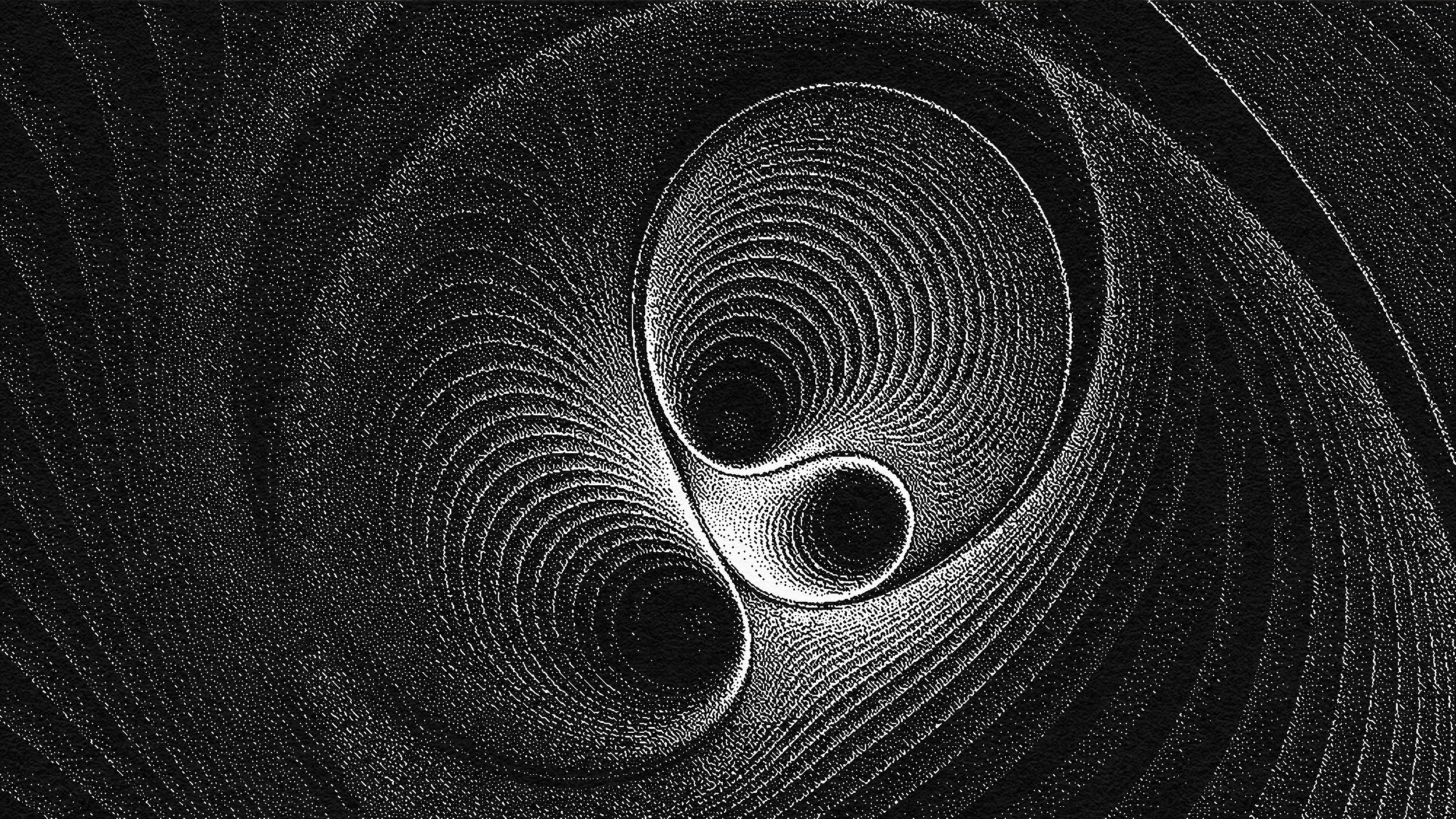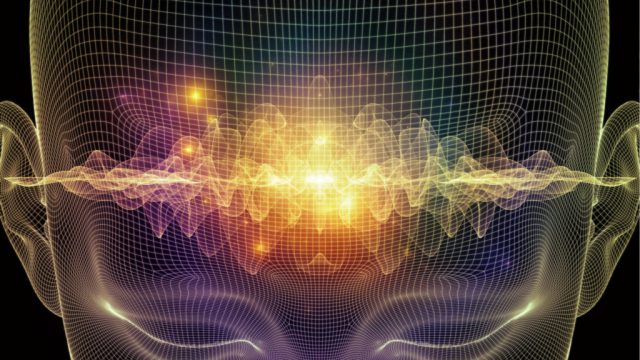Could An Incompleteness In Quantum Mechanics Lead To Our Next Scientific Revolution?
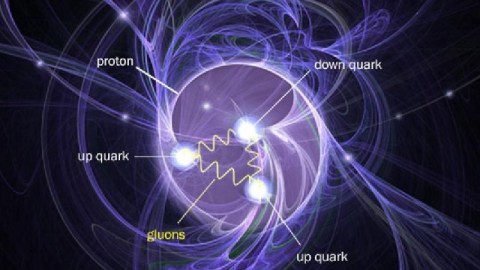
A single thought experiment reveals a paradox. Could quantum gravity be the solution?
Sometimes, if you want to understand how nature truly works, you need to break things down to the simplest levels imaginable. The macroscopic world is composed of particles that are — if you divide them until they can be divided no more — fundamental. They experience forces that are determined by the exchange of additional particles (or the curvature of spacetime, for gravity), and react to the presence of objects around them.
At least, that’s how it seems. The closer two objects are, the greater the forces they exert on one another. If they’re too far away, the forces drop off to zero, just like your intuition tells you they should. This is called the principle of locality, and it holds true in almost every instance. But in quantum mechanics, it’s violated all the time. Locality may be nothing but a persistent illusion, and seeing through that facade may be just what physics needs.
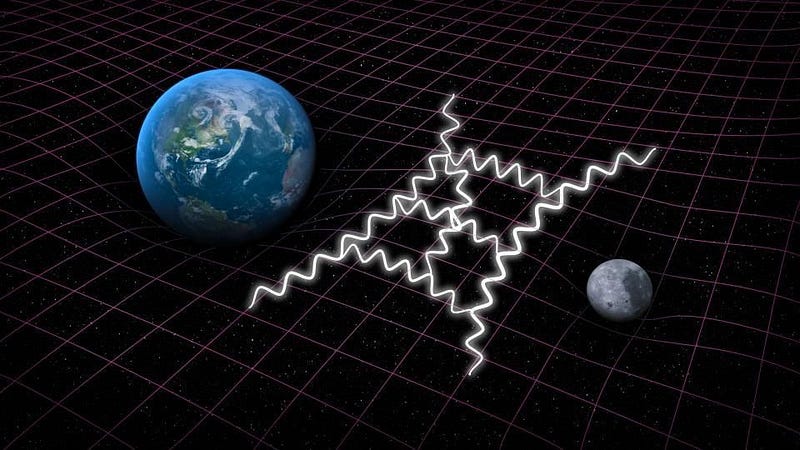
Imagine that you had two objects located in close proximity to one another. They would attract or repel one another based on their charges and the distance between them. You might visualize this as one object generating a field that affects the other, or as two objects exchanging particles that impart either a push or a pull to one or both of them.
You’d expect, of course, that there would be a speed limit to this interaction: the speed of light. Relativity gives you no other way out, since the speed at which the particles responsible for forces propagate is limited by the speed they can travel, which can never exceed the speed of light for any particle in the Universe. It seems so straightforward, and yet the Universe is full of surprises.
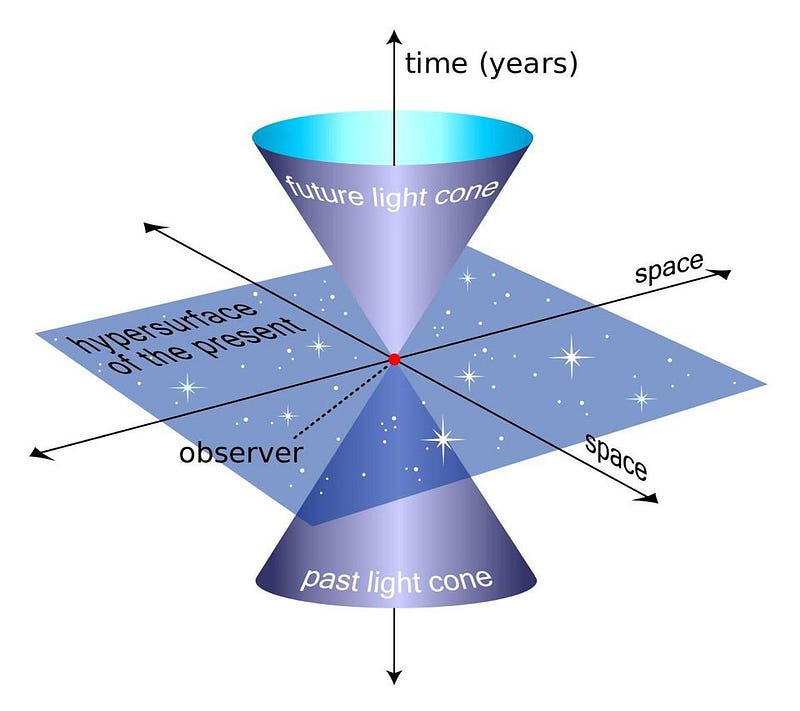
We have this notion of cause-and-effect that’s been hard-wired into us by our experience with reality. Physicists call this causality, and it’s one of the rare physics ideas that actually conforms to our intuition. Every observer in the Universe, from its own perspective, has a set of events that exist in its past and in its future.
In relativity, these are events contained within either your past light-cone (for events that can causally affect you) or your future light-cone (for events that you can causally effect). Events that can be seen, perceived, or can otherwise have an effect on an observer are known as causally-connected. Signals and physical effects, both from the past and into the future, can propagate at the speed of light, but no faster. At least, that’s what your intuitive notions about reality tell you.
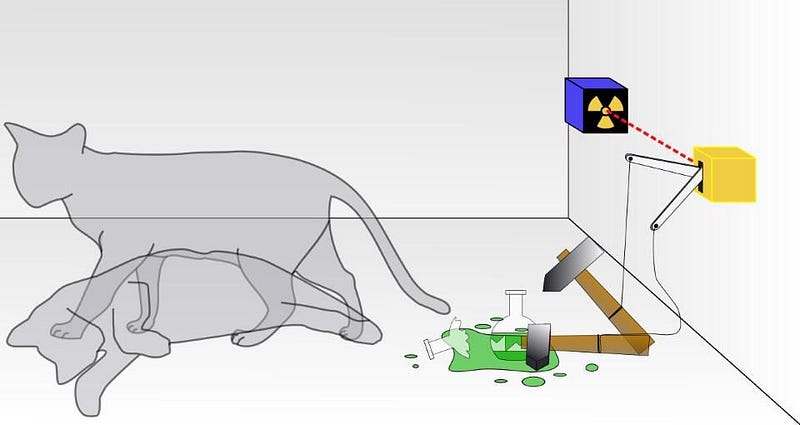
But in the quantum Universe, this notion of relativistic causality isn’t as straightforward or universal as it would seem. There are many properties that a particle can have — such as its spin or polarization — that are fundamentally indeterminate until you make a measurement. Prior to observing the particle, or interacting with it in such a way that it’s forced to be in either one state or the other, it’s actually in a superposition of all possible outcomes.
Well, you can also take two quantum particles and entangle them, so that these very same quantum properties are linked between the two entangled particles. Whenever you interact with one member of the entangled pair, you not only gain information about which particular state it’s in, but also information about its entangled partner.
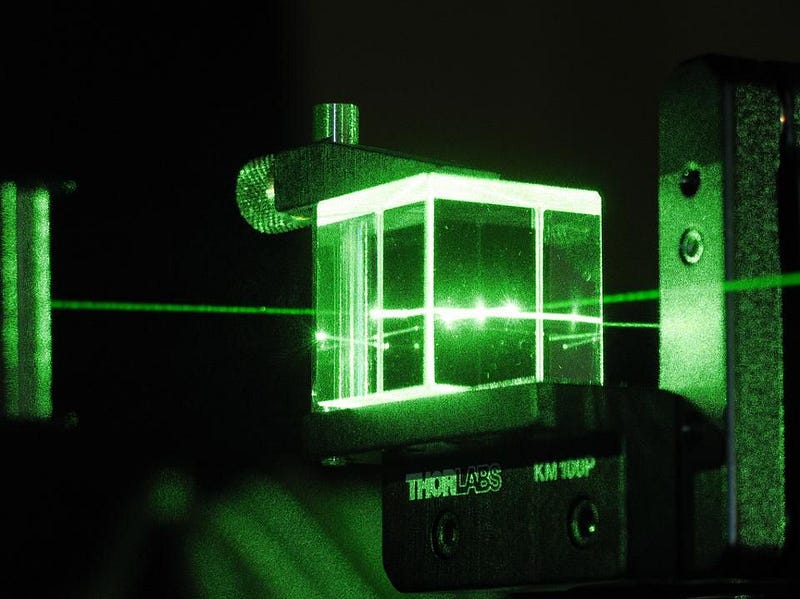
This wouldn’t be so bad, except for the fact that you can set up an experiment as follows.
- You can create your pair of entangled particles at a particular location in space and time.
- You can transport them an arbitrarily large distance apart from one another, all while maintaining that quantum entanglement.
- Finally, you can make those measurements (or force those interactions) as close to simultaneously as possible.
In every instance where you do this, you’ll find the member you measure in a particular state, and instantly “know” some information about the other entangled member.

What’s puzzling is that you cannot check whether this information is true or not until much later, because it takes a finite amount of time for a light signal to arrive from the other member. When the signal does arrive, it always confirms what you’d known just by measuring your member of the entangled pair: your expectation for the state of the distant particle agreed 100% with what its measurement indicated.
Only, there seems to be a problem. You “knew” information about a measurement that was taking place non-locally, which is to say that the measurement that occurred is outside of your light cone. Yet somehow, you weren’t entirely ignorant about what was going on over there. Even though no information was transmitted faster than the speed of light, this measurement describes a troubling truth about quantum physics: it is fundamentally a non-local theory.
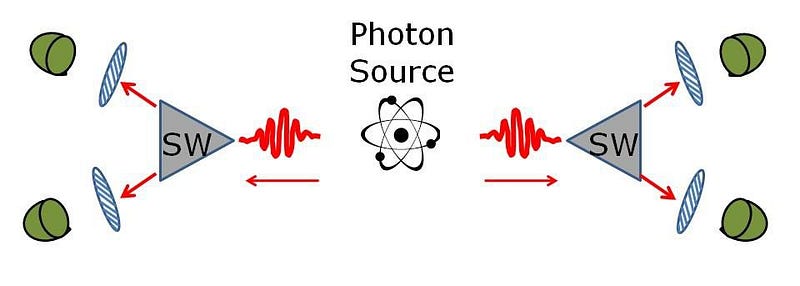
There are limits to this, of course.
- It isn’t as clean as you want: measuring the state of your particle doesn’t tell us the exact state of its entangled pair, just probabilistic information about its partner.
- There is still no way to send a signal faster than light; you can only use this non-locality to predict a statistical average of entangled particle properties.
- And even though it has been the dream of many, from Einstein to Schrödinger to de Broglie, no one has ever come up with an improved version of quantum mechanics that tells you anything more than its original formulation.
But there are many who still dream that dream.
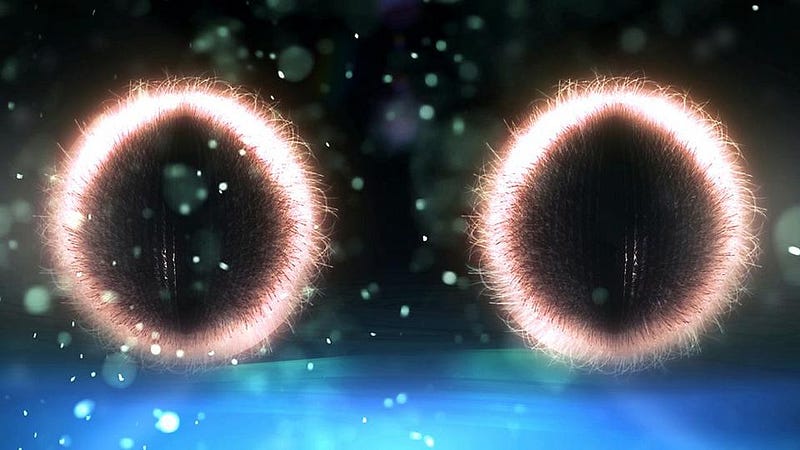
One of them is Lee Smolin, who cowrote a paper way back in 2003 that showed an intriguing link between general ideas in quantum gravity and the fundamental non-locality of quantum physics. Although we don’t have a successful quantum theory of gravity, we have established a number of important properties concerning how a quantum theory of gravity will behave and still be consistent with the known Universe.
When you attempt to quantize gravity, by replacing the concept of curved spacetime with an exchange of particles that mediate the gravitational force, enormous violations of locality will arise. If you look at the consequences of those violations — which Smolin and his coauthor, Fotini Markopoulou, did — you find that they are capable of explaining the non-local behaviors of quantum mechanics via new, non-local, non-observable variables.

There are many reasons to be skeptical that this conjecture will hold up to further scrutiny. For one, we don’t truly understand quantum gravity at all, and anything we can say about it is extraordinarily provisional. For another, replacing the non-local behavior of quantum mechanics with the non-local behavior of quantum gravity is arguably making the problem worse, not better. And, as a third reason, there is nothing thought to be observable or testable about these non-local variables that Markopoulou and Smolin claim could explain this bizarre property of the quantum Universe.
Fortunately, we’ll have the opportunity to hear the story direct from Smolin himself and evaluate it on our own. You see, at 7 PM ET (4 PM PT) on April 17, Lee Smolin is giving a public lecture on exactly this topic at Perimeter Institute, and you can watch it right here.
I’ll be watching along with you, curious about what Smolin is calling Einstein’s Unfinished Revolution, which is the ultimate quest to supersede our two current (but mutually incompatible) descriptions of reality: General Relativity and quantum mechanics. Best of all, I’ll be giving you my thoughts and commentary below in the form of a live-blog, beginning 10 minutes before the start of the talk.
Find out where we are in the quest for quantum gravity, and what promises it may (or may not) have for revolutionizing one of the greatest counterintuitive mysteries about the quantum nature of reality!
(Live blog begins at 3:50 PT; all times listed below in Pacific Time.)
3:50 PM: And welcome! I’ve been thinking about the idea of quantum gravity all day, getting ready and excited for this talk.
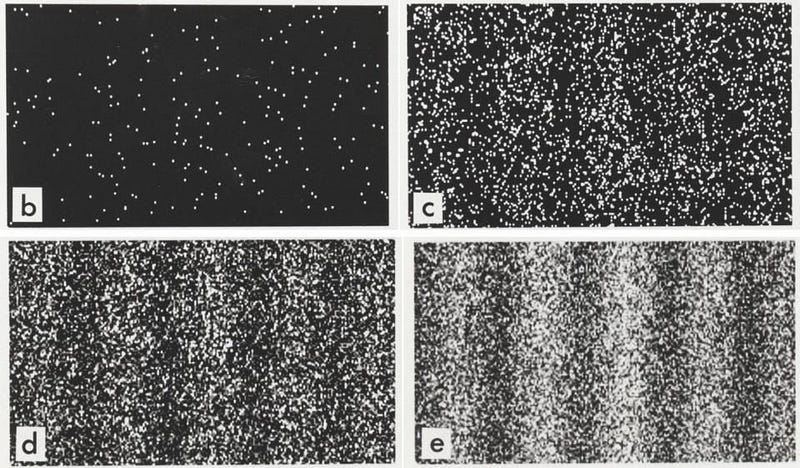
3:54 PM: You might not recognize it, but all the talk about how General Relativity and quantum physics are fundamentally incompatible isn’t some far off “in theory” type of discussion. Instead, there’s a simple thought experiment you can do for yourself to see why they’re incompatible. To get there, I want you to think of one of the most classic experiments of all: the double-slit experiment.
Imagine that you pass an electron through a double slit. If you don’t measure which slit it goes through, you wind up concluding that it must pass through both slits simultaneously, interfering with itself as it does. That’s how you get the interference pattern on the screen behind it. But then, you ask, what happens when you try and measure its gravitational field?
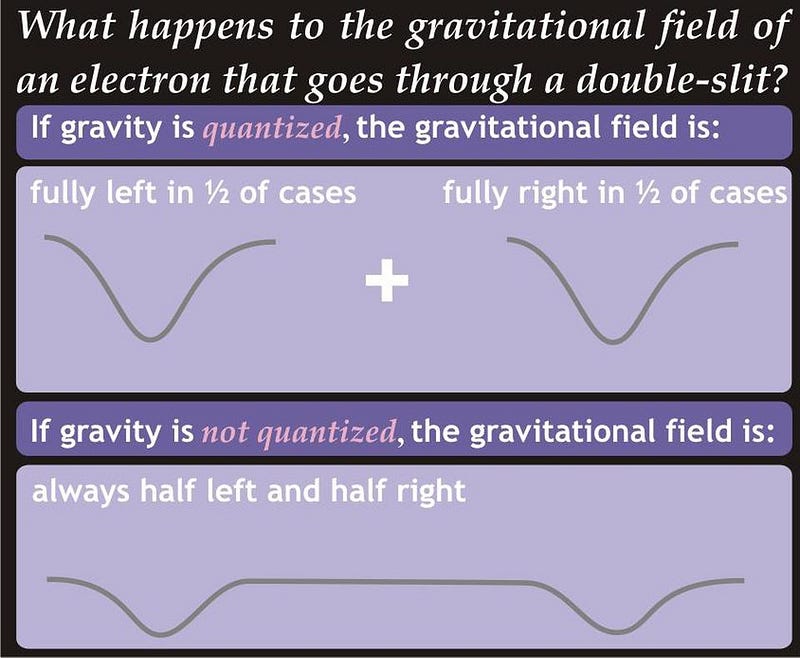
Does the gravitational field display an interference pattern? Or does it follow a single particle-like trajectory, passing through one slit alone?
If we could perform this experiment, we would get a result, but General Relativity offers no predictions at all. Without a quantum theory of gravity, we cannot answer this question.
3:58 PM: What’s fascinating about the idea that Smolin will be presenting is that it posits that perhaps what we see, today, as quantum indeterminism or entanglement or spookiness (or whatever you want to call it) is based on a fundamental problem: that we don’t understand quantum gravity. If quantum gravity comes along with non-localities, perhaps what we see as spooky about quantum physics is really just a manifestation of these fundamental nonlocalities.
For those of you with great memories, Fotini Markopoulou, the coauthor with Smolin on the original (2004) paper postulating this, was the subject of a fascinating article on Nautilus, which I recommend everyone check out.
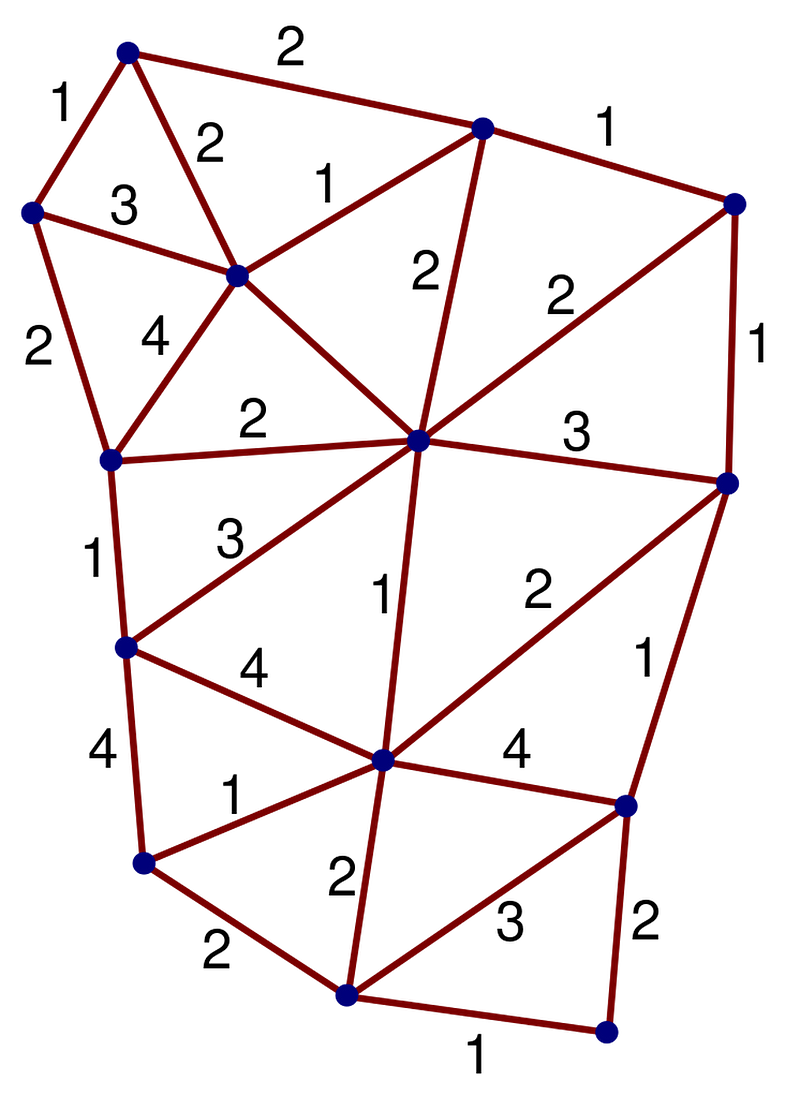
4:02 PM: Also, if you’ve ever heard of Loop Quantum Gravity (LQG), widely considered to be the most serious competitor to String Theory in the effort to quantize gravity, Lee Smolin is the coinventor of LQG. He’s about to begin speaking in just a minute, but that’s who you’re going to be getting a lecture from today. I can’t wait!
4:06 PM: Lee Smolin is being very unintentionally funny, speaking about the whole slew of people who send him unsolicited “solutions” to the biggest problems of quantum physics. Although he, like me, never wants to dissuade people from thinking deeply about problems for themselves, he very gently dissuades them from taking away from his time and energy by airing them in this forum.
(For those of you thinking this is an open invite to send me those theories, be advised that I no longer evaluate unsolicited manuscripts or ideas sent to me as a policy.)
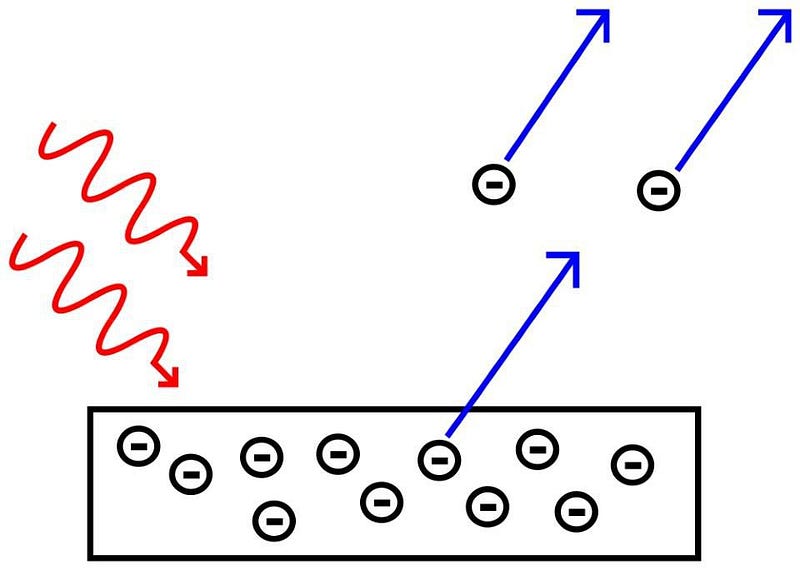
4:08 PM: This is a little bit of a fact that we don’t normally talk about: when Einstein had his “miracle year” in 1905, the photoelectric effect was really the most revolutionary component of his work. When we talk about light being both a particle and a wave, this was the first experiment that demonstrated its particle-like nature, as shining light on an object gave rise to ionized electrons, but only if each individual quantum of light had sufficient energy to do so.
This is where Smolin gets the idea for “Einstein’s Unfinished Revolution,” as the brainchild of the quantum nature of reality should eventually give rise to a finished revolution: where reality would be independent of us, the observer.
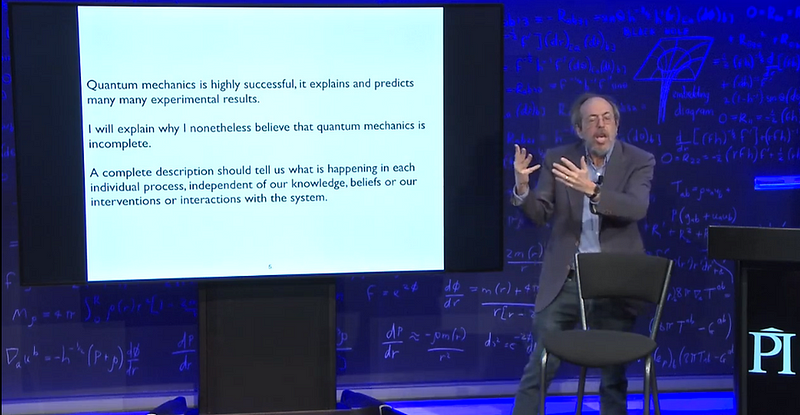
4:12 PM: Does nature exist independently of our knowledge and existence? That’s the position that a quantum realist takes, but this is a philosophical position. So far, quantum mechanics has given rise to a large number of interpretations, which either accept or reject realism, but this has (unfortunately) not been a truly testable premise.
The converse of a realist is an observationalist, where the observer’s intervention plays a fundamental role. There are certain combinations of:
- realism,
- locality,
- determinism,
- and the presence or absence of hidden variables,
that can be excluded or not excluded. In general, however, you have to accept something extremely uncomfortable, or you’ll wind up conflicting with experiments you can perform.
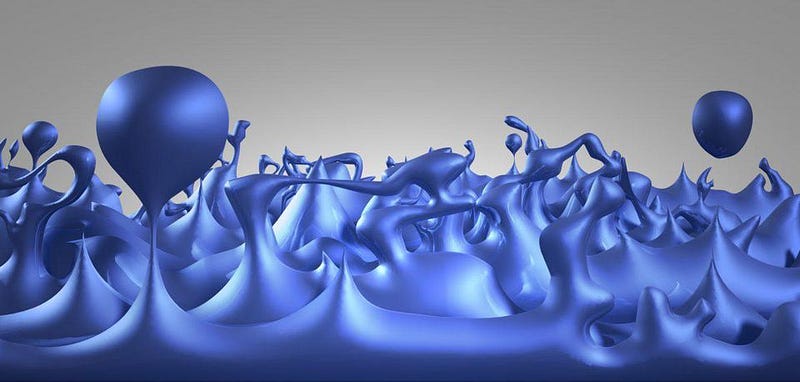
4:16 PM: For those of you leaving comments like “Smolin is dull,” I would urge you to focus on the content of his talk, rather than the style. He’s actually saying some deep things here. For example, this following Niels Bohr quote:
“When we measure something we are forcing an undetermined, undefined world to assume an experimental value. We are not measuring the world, we are creating it.”
You have to realize that this is something very subtle, but that is indisputable. There are experiments you can perform that show you the world behaves differently if you do or don’t measure it.
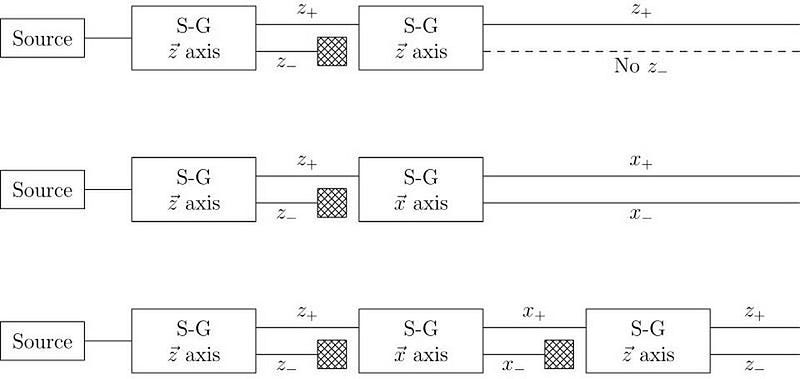
4:20 PM: For example, there’s an experiment you can do called the Stern-Gerlach experiment, where you put an electron through a magnetic field oriented in a particular direction. This could be along, say, the x-axis. Electrons that spin in one direction will split in the positive direction, electrons that spin in the other direction deflect in the negative direction.
The act of determining this result along the x-axis destroys any information along the y-axis or z-axis. If you set up another Stern-Gerlach experiment in the x-axis, the particles that deflected positively will still deflect positively; those that deflected negatively will still deflect negatively.
But if you throw in another experiment in the y-direction, for instance, you’ll not only see a split in that new direction, you’ll destroy any information about the x-direction. It’s messed up, but it’s experimentally real.
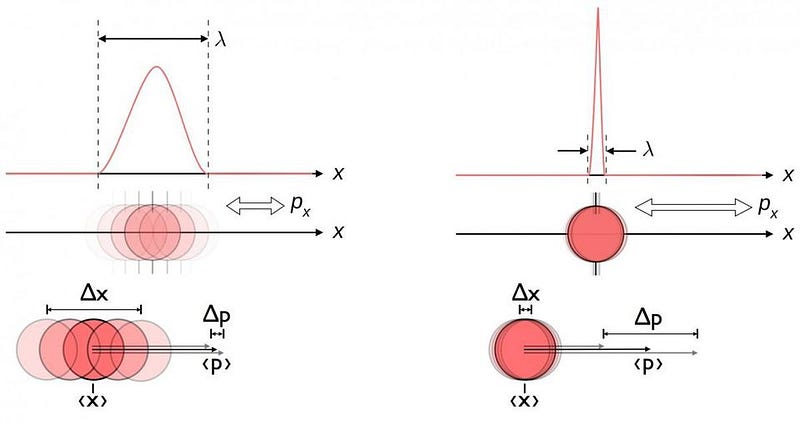
4:24 PM: And this is another aspect of quantum physics that is very real: fundamental quantum uncertainty. There are certain combinations of properties that cannot be simultaneously known to better than a certain accuracy, combined. Position and momentum, energy and time, or even (as we just illustrated) spin in two mutually perpendicular directions, cannot be known to arbitrary accuracy.
“Why is it this way?”
We don’t know! That’s the problem: there’s no governing principle that underlies it. This is the principle.
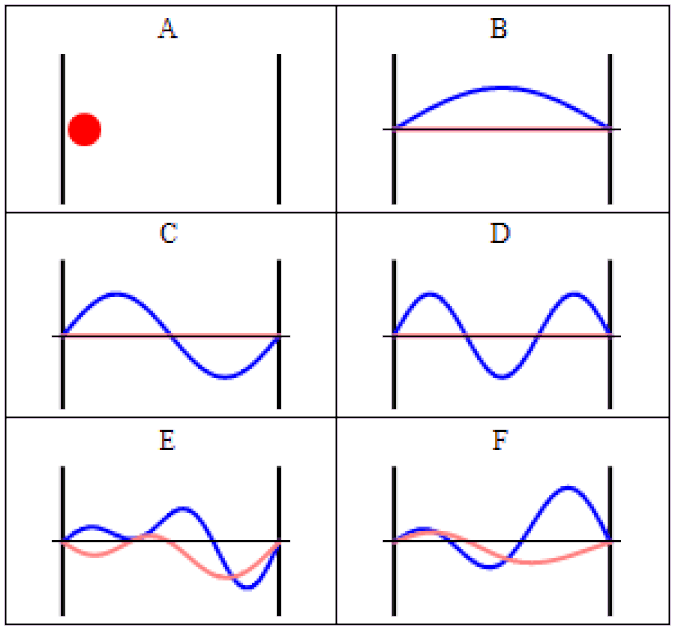
4:28 PM: Smolin also wants you to understand probability and superposition. You cannot describe something as you would classically, with absolute properties that are independent of your measurements.
We impose measurements; we are making them on a system. But this constrains the potential outcomes, and gives us a probability distribution for what those observable, measurable quantities can be. This may be philosophically dissatisfying, but it’s absolutely 100% consistent, in a way that nothing else is, with our observed reality.
4:31 PM: Just an FYI, there hasn’t been a connection with gravity presented yet at all. You haven’t missed it; don’t worry.
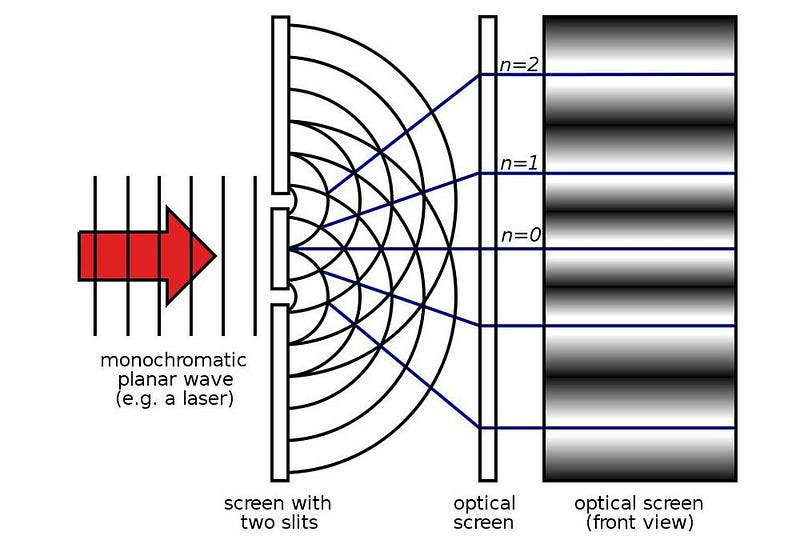
4:33 PM: This is the crux of what Smolin doesn’t like. There are two parts to quantum mechanics.
- When you don’t make an observation, reality evolves smoothly, like a wave, and everything remains in this indeterminate state.
- When you do, we cannot predict where particles will be or what properties they will have, but only a probability distribution of what the possible outcomes will be.
If we didn’t exist, reality would only evolve according to point 1. (Well, if there were no observers, that’s true. You don’t have to be a human to make an observation!) But these two things, in tandem, present a big problem for the realist interpretation of quantum mechanics.
4:37 PM: Put a bunch of particles together in an indeterminate state, and what happens? They interact according to the rule of superposition: they’re waves, and they interfere both constructively and destructively, and that sets you up with your full suite of probable outcomes.
But if you were to go and make a measurement, you’d only get one outcome. From the Copenhagen interpretation to the Many-Worlds interpretation to the Transactional interpretation and all the others, there is no difference in what you’d see in terms of measurements. People want to get rid of that second rule (or part) that Smolin dislikes, but you do not get an answer that agrees with reality. You cannot predict the outcome of a quantum mechanical experiment with certainty.
4:39 PM: Okay, Smolin just said something that critics of realism say, and this is important because this is what I often say myself. In Smolin’s words:
Now, there are some people who believe that the measurement problem is not really a problem and it’s overexaggerated and it’s a bunch of people who are past their prime and should be retired who’ve been wondering about this forever, but I’ve been wondering about this since I was seventeen!
And that’s fine. You can worry about whatever you want. But if you want to get anywhere, you have to formulate the problem in a way that could potentially lead to an answer, or you’re just philosophizing and justifying your own flawed concept of what reality ought to be.
You don’t get to tell reality what it should be. You can only ask it what it is, and draw conclusions based on what you can observe or measure based on the predictions of your theory and framework.
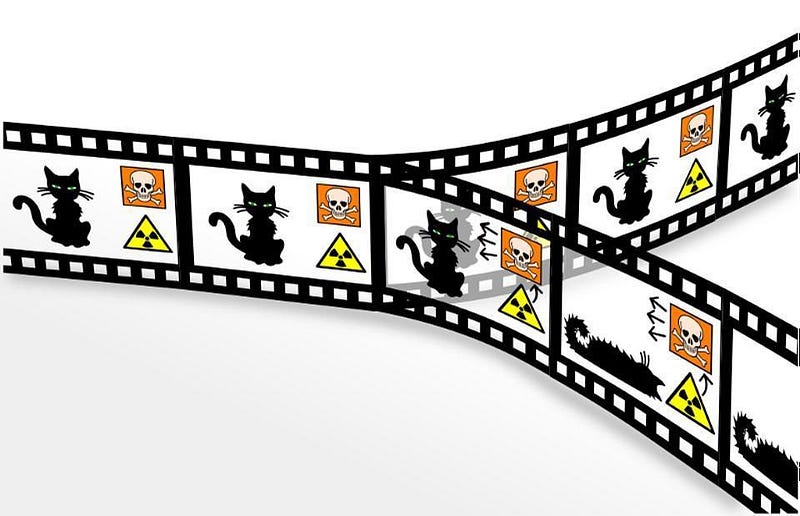
4:42 PM: Are you bothered by Schrodinger’s cat? Are you troubled by the fact that reality is indeterminate until you make a measurement?
Well, you can worry about it all you like, and come up with all the ways to view the problem that you like. But until you make a measurement, you cannot successfully predict the outcome. That’s why, generations after Schrodinger, people still worry about it.
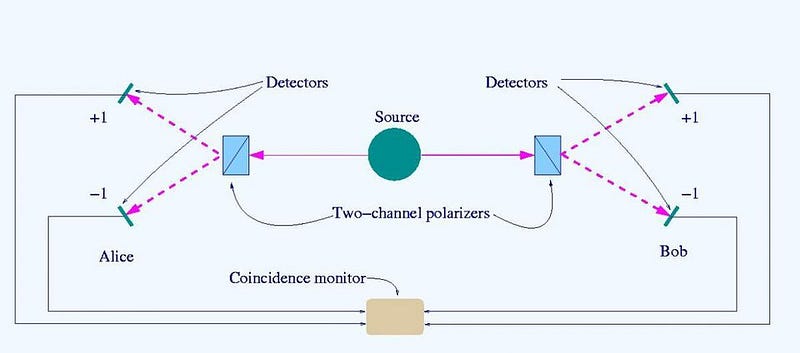
4:45 PM: So what Smolin is setting up now is the problem of quantum entanglement. If you take a pair of entangled particles, and separate them by a very large distance, and an observer goes along with each one, both can measure the quantum properties of their particles.
Observer #1 might measure, for example, that their particle is spin up.
Observer #2 might measure, therefore, that their particle is spin down.
The thing is, even without getting observer #2’s measurement, observer #1 can do better than random (50/50) guessing about what observer #2’s measurement was. And this happens instantaneously, even if the measurement takes a second and observer #2 is light-years away. Smolin asserts that there must be something really “real” about this property!
4:48 PM: As Smolin says, we only measure one of these particles, and yet we know something about the physical reality, something more than just unadulterated probabilities, of the other one.
This type of thought experiment is interesting in a way. Let’s say you measure the position of particle #1, and the momentum of particle #2: can you beat Heisenberg uncertainty in this fashion? The answer, of course, is no, but you can learn something about physical reality. This line of thinking is heavily related to the EPR paradox, and is why Einstein called quantum mechanics incomplete.
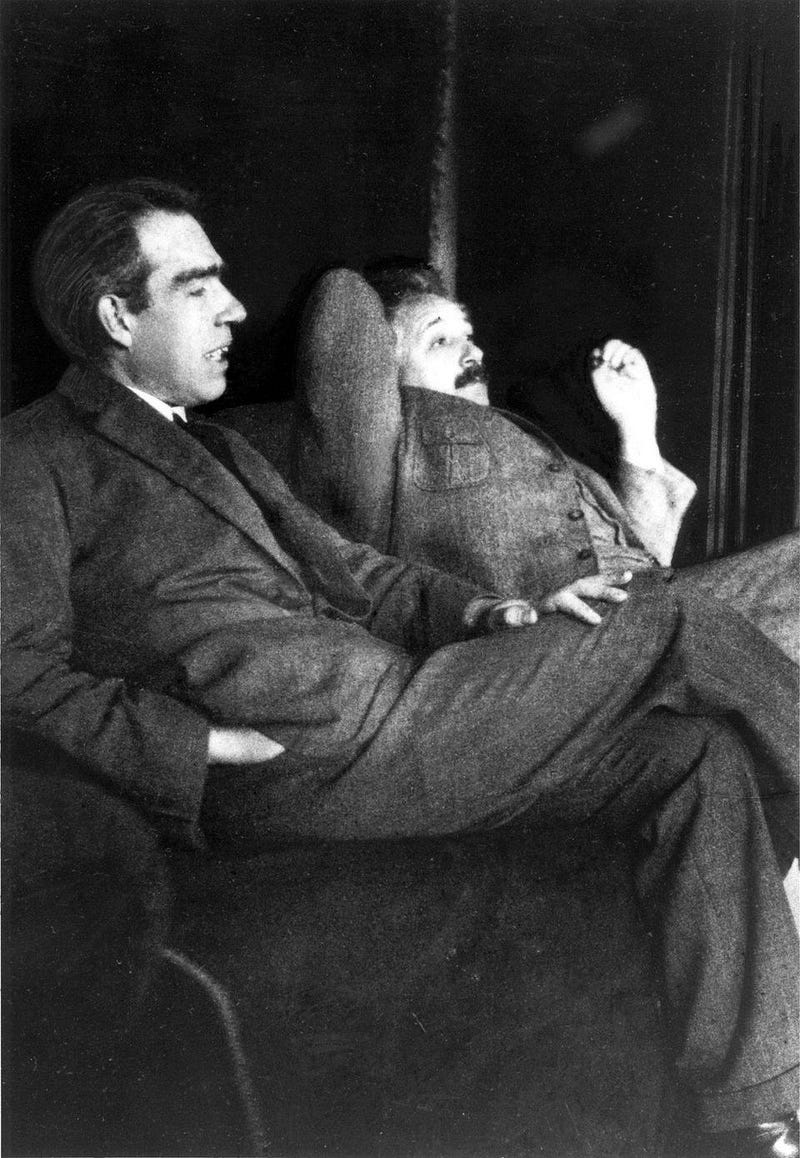
4:51 PM: Smolin fesses up that there’s a flaw in this argument. The issue is that you have two systems, and you’re measuring something about one system to infer a property of the other. Therefore, you’re determining something about the physical reality of the other system without measuring it, and therefore there’s some sort of objective reality.
But the hidden assumption here is that physics is local, meaning that you can only disturb a system if it’s nearby, by directly interacting with it. And that’s the flaw: you moved these things far away, and therefore the information you’re getting is nonlocal.
Well, quantum physics is a nonlocal theory! And this is the problem: you cannot have your theory be real and local and deterministic and contain hidden variables all at once.
4:54 PM: The thing is, no matter where you are, the Universe as you perceive it is fundamentally indeterminate until you make a measurement. And what you learn about the Universe will always be consistent with that. Even if an observer a long distance away made an observation that “determined” something about your system, you’d have no way of knowing it.
You’d see what the rules of quantum physics predicted, and the information that a distant observer had could only be transmitted to you at the speed of light or slower. By the time their signal arrived at you, and said, “hey, this particle had this position or this spin or this momentum…” you’d already have your measurement, and say, “yup, that’s consistent with what I measured. Well done.”
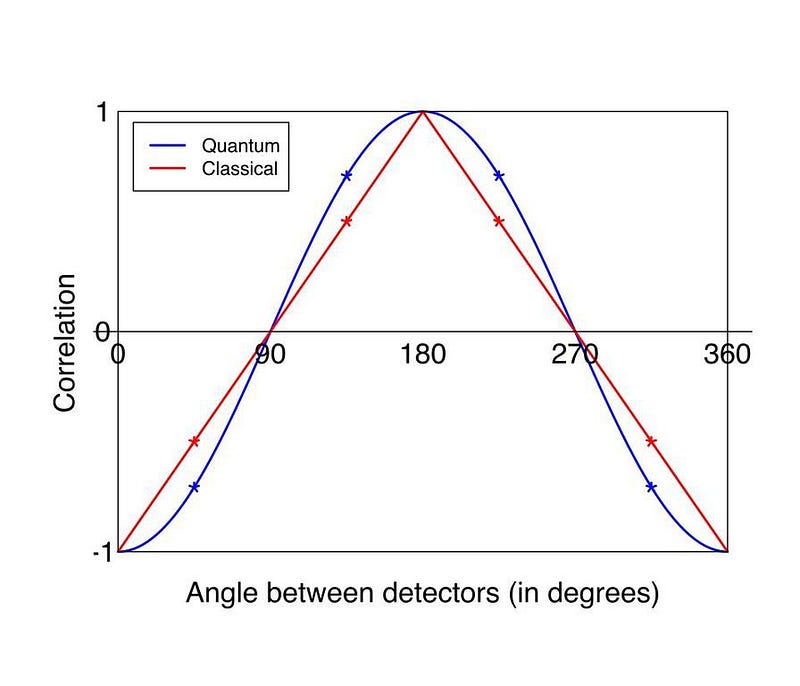
4:58 PM: The odd thing is that you cannot have a local, realist interpretation of quantum mechanics. Smolin is seeking to recover realism at the cost of locality.
To me, it’s a wash. If you see a blurry image on the television, it could be because:
- your eyes are blurry,
- the television signal is blurry,
- or the camera that recorded the signal is blurry,
but with no further information, it doesn’t matter. What matters is that we always observe this fundamental blurriness.
5:00 PM: Are you a realist, like Einstein, de Broglie, Schrodinger, Bohm, Bell, or Penrose? Are you an anti-realist, like Bohr, Heisenberg, or Pauli?
Or are you a shut-up-and-calculate person, like Mermin, or, apparently, Siegel?
Well, Smolin is a realist, and hopes to solve all our puzzles with nonlocality.

5:02 PM: Smolin gives a good answer to the first question, which is basically, “is reality comprehensible?” And his answer is “I don’t know, but I want to try.” And that’s fair!
I don’t necessarily agree with his assessment of what the next step is, but I can’t fault someone for taking a step in a direction that they don’t know whether it will be fruitful or not. You have to try, even if you try and fail. That’s what theoretical physics is about.
5:05 PM: There are philosophical concerns about the Multiverse, and how you get probabilities out of a formulation of quantum theory without measurements. So far, all such formulations have been shown to be fundamentally flawed, and are unsuccessful. That doesn’t mean it’s a fruitless endeavor, but it means we’re not there yet.
5:07 PM: Smolin gives a long and meandering answer to another question, but recognizes that the only way to get somewhere is to formulate a theory that has testable predictions that are different from standard quantum mechanics. So far, no one has done this in a successful fashion. They have only succeeded in ruling out alternatives that differ from standard (i.e., Bohr’s) quantum mechanics.

5:10 PM: It’s kind of funny, putting this all together, that it seems like the only way to get a simultaneously “local” and “real” Universe, like Smolin wants, is to never make an observation. Boy, isn’t that the ultimate in dissatisfying answers if true?
5:12 PM: And, beyond that, he does bring up an interesting point: why did we choose to develop Bohr’s (and Heisenberg’s, etc.) interpretation of quantum physics, which eschews realism, rather than de Broglie’s, which keep realism and eschews locality?
I wrote a long article a while ago where my basic answer was who cares? After listening to Lee Smolin’s talk, I’m more convinced than ever that, until you have a theory that makes different predictions from either one (Bohr’s and de Broglie’s theories give identical prediction), you can either try to develop one, like Smolin does, or you can waste your time thinking about it.
That’s sure to upset many, but sometimes, the truth of the Universe is upsetting. Things are the way they are, and they are not bound to conform to your intuitive expectations of how “reality,” whatever that may be, ought to behave.
5:16 PM: Smolin’s final point is a great one: we do science because we don’t know the answer. We trust that we will choose the explanation or the theory or the formulation that maximizes what we can explain about the Universe. And we trust, 100 years from now, that people will have made the right decisions, today, about which theories they chose to keep and which ones they discarded.
Thanks for joining me for an interesting lecture and discussions on science, and just maybe, someday, we’ll have some interesting progress to report on this topic. Until then, you don’t have to shut up, but you still do have to calculate!
Ethan Siegel is the author of Beyond the Galaxy and Treknology. You can pre-order his third book, currently in development: the Encyclopaedia Cosmologica.



